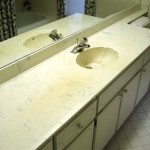Replacing Bathroom Floor Rotted: Essential Aspects to Consider
Replacing a bathroom floor that has succumbed to rot is a crucial home repair project that requires careful attention to essential aspects. Neglecting these factors can lead to costly mistakes and compromised bathroom functionality. This content will delve into the key considerations for successfully replacing a rotted bathroom floor, ensuring a durable and aesthetically pleasing outcome.
Before embarking on this project, it's essential to fully understand the extent of the damage and the underlying cause of the rot. Moisture and water damage are primary contributors to bathroom floor rot, so it's vital to identify and eliminate the source before replacing the flooring. This may involve repairing leaky pipes, improving ventilation, or addressing excessive bathroom humidity.
The choice of replacement flooring material is another crucial aspect. Ceramic or porcelain tiles are excellent options for bathrooms due to their durability and moisture resistance. Vinyl flooring is another waterproof option that offers a wide range of styles and patterns. However, it's important to consider the subfloor's condition before selecting flooring. If the subfloor is damaged or rotten, it may need to be replaced as well.
Proper subfloor preparation is essential for a stable and long-lasting bathroom floor. The subfloor must be level, dry, and free from debris. In some cases, a layer of self-leveling compound may be necessary to smooth out any imperfections. If the subfloor is significantly damaged, it may need to be replaced with plywood or cement board.
Installing the new flooring requires precision and adherence to the manufacturer's instructions. Dry-fitting the flooring before securing it in place allows for adjustments and ensures a proper fit. Use the appropriate adhesive or mortar for the chosen flooring material and follow the manufacturer's guidelines for curing time.
Once the flooring is installed, sealing the grout lines and edges is crucial to prevent water penetration and further rot. Use a high-quality sealant specifically designed for bathrooms and apply it according to the manufacturer's instructions. This will help maintain the integrity of the floor and prevent future damage.
By considering these essential aspects, you can successfully replace a rotted bathroom floor, restoring its functionality and aesthetics. Proper planning, material selection, subfloor preparation, installation, and sealing will ensure a durable and long-lasting bathroom floor that meets your needs and enhances the value of your home.

How To Replace A Rotted Bathroom Floor Subfloor Flooring Floors Diy

Handyman Hub Maintenance Co Tx Az Ut

How To Replace A Rotting Bathroom Floor Hunker Mobile Home Renovations Makeovers Remodeling Homes

Rotting Floor From Leaking And Alternatives For Long Term Fix

Replacing A Rotted Floor Under The Toilet Diy

How Do You Replace A Subfloor With Step By Pictures Bestlife52

How To Repair A Rotted Floor Under The Toilet

How To Replace A Rotted Bathroom Floor

Rotten Subfloor Under Bathtub And Plumbing Wall Doityourself Com Community Forums
Rotten Wood Under Tub Diy Home Improvement Forum
Related Posts







